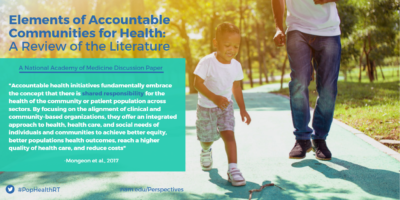Our Work with Accountable Communities of Health
Across the United States, Accountable Communities of Health (ACHs) are collaborating and partnering with communities, and the people and organizations within them to deliver on a shared goal – building places that thrive and improve health and well-being for all community members.
Background
Visible Network Labs (VNL) has partnered with ACHs to track, evaluate, and demonstrate their progress towards long term goals. As ACHs are a relatively unique type of organization, it’s important to have specific questions tailored to their structure. VNL’s Data Science team works in close collaboration with ACHs to develop and pose only the most relevant, targeted questions to the network. Each is succinct – with an eye on respecting the respondent’s time, and carrying a purpose to inform those involved.
VNL’s Data Science team utilizes the company’s PARTNER CPRM (Community Partner Relationship Management) platform, and its decades of network science expertise to survey ACH network members. Using the information provided from PARTNER CPRM and their expertise, the team analyzes and maps connections identified by survey respondents.
Network science is based on a definitive principle that more is not always better. The appeal to create a larger and more diverse network is strong; but to truly leverage the power of networks, the reality is there are limits to the funding, time, and team capacity available to build and manage the relationships associated with such networks. VNL’s Data Science team garners insights and makes recommendations with adherence to the “more is not always better” philosophy.
In VNL’s past work with ACH’s, process outcomes in final reports have been used to track, demonstrate, and evaluate the ACH’s progress towards long term goals. Some past recommendations have been:
- Develop intentional strategies for partner engagement and involvement in the network over time.
- Develop strategies to increase perceptions of the value of power and influence among partners of the network.
- Discuss what success means for the partners of the network, and develop strategies to achieve it, and to recognize/celebrate the network and those who have helped reach it.
Takeaways
Below are examples of past takeaways VNL’s Data Science team has given to ACHs upon the completion of prior projects, which can be applied to future work and initiatives planned by other Accountable Communities of Health:
Key Players and Influencers: Upon receiving the network map, discussing, and diving deeper into the characteristics of the overall network can bring added benefits. Findings on how certain types of partners connect with each other, which relationships are considered most valuable, and which collaborative activities are best suited for the preferred methods of interaction within the network can help increase network effectiveness and cohesion.
Gaps and/or Redundancies: It is also important to note if there are sectors or types of organizations that are over-represented in the network, and if there are additional organizations that could, or should be invited to the table.
Resource Contribution: Assessing resource contribution by ACH network partners is important – it can shed light on if the existing contributions are being leveraged properly to achieve the goals of the ACH, or if there are additional needs. Identifying gaps and/or redundancies in contributions are crucial to ensuring all ACH initiatives are sufficiently supplied, and helps to eliminate waste.
Level Intensity: Evaluating if network partners are limited by too many relationships stuck simply at the “Awareness” (Low Alignment and Knowledge) level of intensity with other partners, or perhaps are hampered by a high percentage of “Integrated” (High Alignment and Knowledge) level relationships within the network can be a way to alleviate some of the issues and stress that can be associated with relationship highs and lows. Getting help from the overall network to transition those relationships to operating at more optimal levels of intensity, like “Coordinated” (Low Middle) or “Cooperative” (High Middle) can be the solution.
Find out how VNL can help evaluate, track, and visualize the work your ACH is doing by reaching out to us using the form below, and to schedule a PARTNER CPRM demonstration.
We look forward to connecting with you!

More VNL Case Studies

Our Work with Accountable Communities of Health
Across the United States, Accountable Communities of Health (ACHs) are collaborating and partnering with communities, and the people and organizations within them to deliver on a shared goal – building places that thrive and improve health and well-being for all community members. Learn More Background

Helping Denver Public Schools Visualize its Networks
When school administrators within Denver Public Schools’ Central Office identified a need to better understand their evolving internal professional and community relationships, they turned to Visible Network Labs to get clarity. Learn More Executive Summary Denver Public Schools’ (DPS) mission is for all students, regardless

Our Work With RECETAS
Explore our partnership with RECETAS, a global project. Visible Network Labs’ Data Science team used our PARTNER CPRM tool to analyze organizational networks in six cities around the world – to help RECETAS better understand an innovative way of promoting mental health and well-being. Learn
